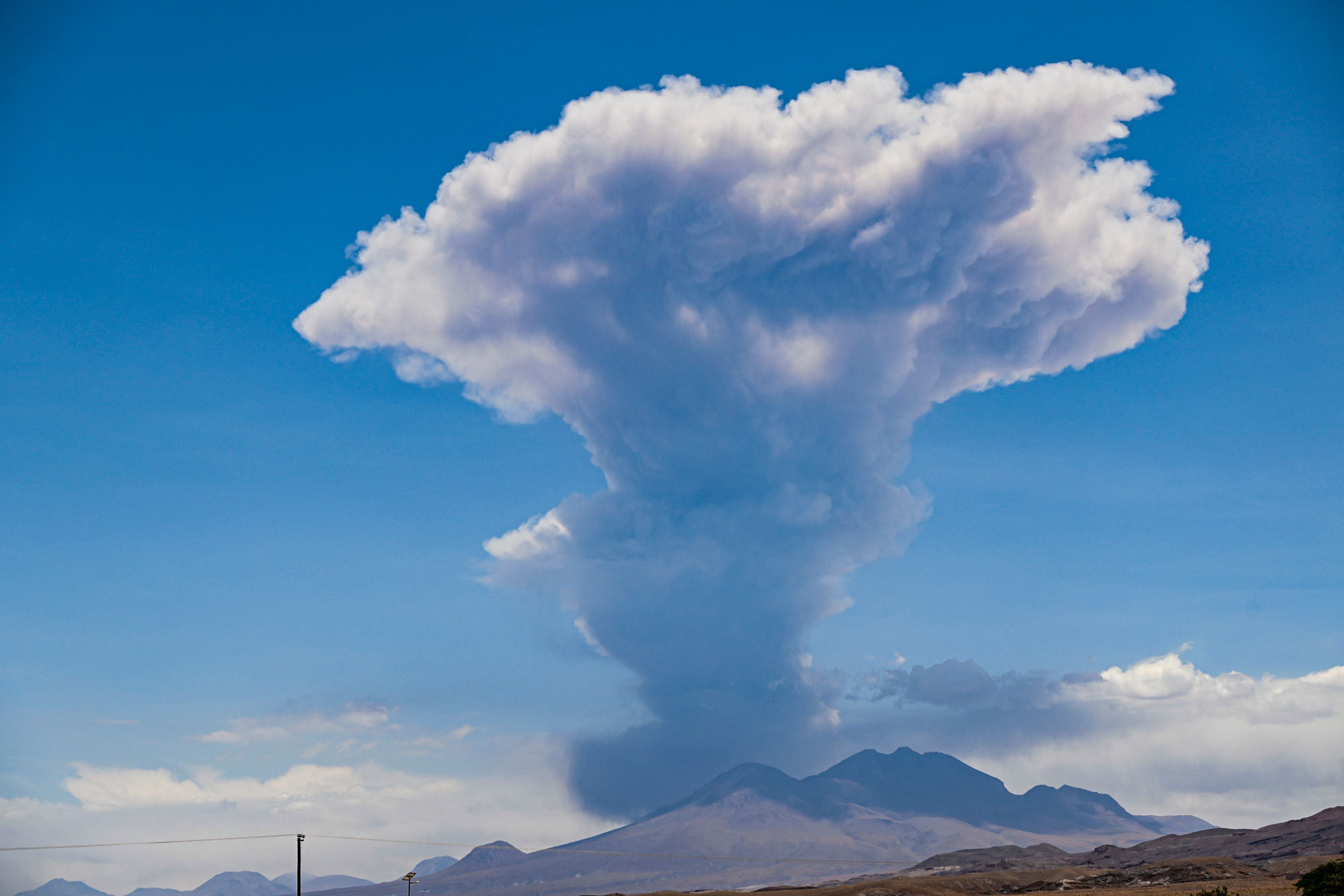Chile issues public alert as Lascar volcano begins erupting
Authorities revise alert to yellow to denote an unstable volcano
Your support helps us to tell the story
This election is still a dead heat, according to most polls. In a fight with such wafer-thin margins, we need reporters on the ground talking to the people Trump and Harris are courting. Your support allows us to keep sending journalists to the story.
The Independent is trusted by 27 million Americans from across the entire political spectrum every month. Unlike many other quality news outlets, we choose not to lock you out of our reporting and analysis with paywalls. But quality journalism must still be paid for.
Help us keep bring these critical stories to light. Your support makes all the difference.
The Chilean authorities have issued a yellow alert after a volcano in the Andes erupted, sending plumes of ash thousands of metres into the sky and triggering earthquakes.
Lascar, a volcano located in the north of the country, flared up on Saturday at around 2.36am local time, Chile's National Geology and Mining Service said.
The volcano sent a column of ash and gases nearly 6,000m above its crater. Lascar erupted in 1993 and since then minor volcanic activity has been reported there in 2006 and 2015.
Residents of the town of Talabre in the Antofagasta region, located less than 15km from the active volcano, were the first to notice volcanic activity, AFP reported.
The town was alerted by the authorities in case of an evacuation, but no property has been damaged so far.
The warning system for Lascar has now been raised from its lowest level of green to yellow, indicating that the volcano is “unstable”. The authorities have set up a 5km no-entry perimeter from the volcano's crater.
The volcano reaches a maximum elevation of 5,592m above sea level and is 70km from the popular tourist destination of San Pedro de Atacama.

In the southern part of the country, yellow alerts remain in effect for regions around the Nevados de Chillan volcanic complex and the Villarica Volcano.
Meanwhile, the alert level for the Mauna Loa volcano on Hawaii’s Big Island was lowered from a warning to a watch on Saturday after the mountain’s first eruption in nearly 40 years.
The US Geological Survey’s Hawaiian Volcano Observatory said in a bulletin that the eruption on the mountain’s northeast rift zone was continuing, but lava output and volcanic gas emissions were “greatly reduced”.
Subscribe to Independent Premium to bookmark this article
Want to bookmark your favourite articles and stories to read or reference later? Start your Independent Premium subscription today.

Join our commenting forum
Join thought-provoking conversations, follow other Independent readers and see their replies
Comments